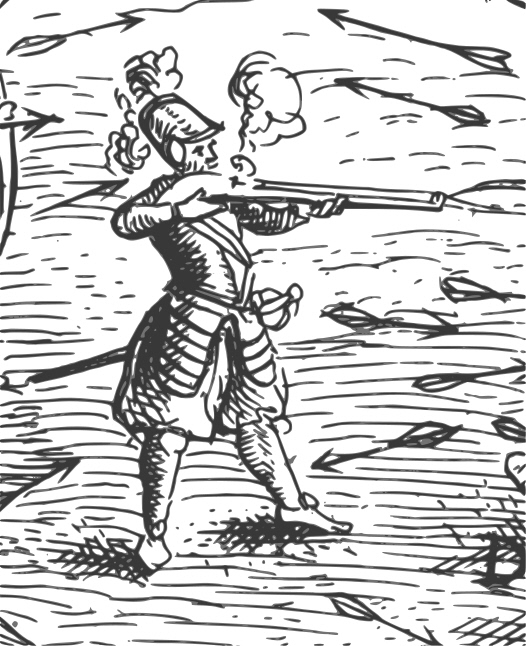
Anne Lepere & François Pinsonnault dit Lafleur
Introduction
This document presents a historical genealogy of François Pinsonneau dit Lafleur, a soldier in the Saint-Ours company, and his wife Anne Lepere. This research is based on available historical records from New France (Quebec) during the 17th century.
François Pinsonneau dit Lafleur
Origins and Early Life
François Pinsonneau (also spelled Pinsonnault), known by the dit name “Lafleur,” was born around 1646 in France. Records suggest he originated from the parish of Saint-Médard in Paris, in the diocese of Paris, Île-de-France, Kingdom of France.[1]
His parents were:
- Father: François Pinsonneau
- Mother: Marguerite Michel
Military Career
François arrived in New France as a soldier in the Carignan-Salières Regiment, specifically serving in the Saint-Ours company.[2] The Carignan-Salières Regiment arrived in New France (Quebec) between 1665 and 1668, sent by King Louis XIV to defend the colony against Iroquois attacks.
- Regiment: Carignan-Salières
- Company: Saint-Ours company
- Arrival in New France: Approximately 1665
- Role: Soldier
After his military service, like many former soldiers of the regiment, François chose to remain in New France as a settler rather than return to France.
Settlement in New France
Following his military service, François established himself as a settler in the Montreal region. Records indicate he became a habitant (farmer) at Laprairie, south of Montreal.[3]
Anne Lepere (Leper)
Origins and Early Life
Anne Lepere (sometimes recorded as Leper) was born around 1651 in France. She was a Fille du Roi (King’s Daughter), one of approximately 800 women sent to New France between 1663 and 1673 as part of King Louis XIV’s program to boost the population of the colony.[4]
Her parents were:
- Father: Pierre Lepere
- Mother: Jeanne Lemoyne
Anne arrived in New France in 1669.[5]
Marriage and Family
François Pinsonneau and Anne Lepere were married on September 30, 1670, at Montreal.[6] Their marriage contract was drawn up by notary Bénigne Basset on September 22, 1670.[7]
Children
François and Anne had several children, including:
- François Pinsonneau – Baptized November 7, 1673, at Montreal[8]
- Jean-Baptiste Pinsonneau – Born circa 1675
- Jacques Pinsonneau – Born circa 1677
- Marie-Anne Pinsonneau – Born circa 1680
- Catherine Pinsonneau – Born circa 1682
- Antoine Pinsonneau – Born circa 1684
Land Holdings
François was granted land in Laprairie, in the seigneury owned by the Jesuits. This area was being developed for settlement in the late 17th century.[9]
- Location: Laprairie (La Prairie de la Madeleine)
- Type of property: Habitant farm
- Granted by: Jesuit Order (seigneurs of Laprairie)
Later Life and Death
Limited information exists about the later years and death of François Pinsonneau and Anne Lepere. Based on baptismal records of their children and other documents, it appears they remained in the Laprairie area throughout their lives.
François is believed to have died sometime after 1700, though the exact date is not clearly established in available records.
Legacy
The Pinsonneau family contributed to the development of French settlement in the Montreal region, particularly in Laprairie. Their descendants continued to live in the region for generations, with the surname sometimes evolving to Pinsonnault in later records. Many present-day families in Quebec and across North America can trace their ancestry back to François and Anne.
Historical Context
François Pinsonneau’s life as a soldier in the Carignan-Salières Regiment and subsequent settler represents a common pattern in the colonization of New France. Many soldiers from this regiment chose to remain in the colony after their service, encouraged by land grants and other incentives from the French crown. The regiment’s arrival in 1665 was a pivotal moment in Quebec’s history, contributing significantly to the colony’s defense and demographic growth.
Anne Lepere’s journey as a Fille du Roi also represents an important chapter in Quebec’s history. The Filles du Roi program was crucial for addressing the severe gender imbalance in the colony and establishing family settlements that would form the foundation of French-Canadian society.
Sources and Further Reading
Digital Archives and Resources
For further research on François Pinsonneau, Anne Lepere, and their descendants, the following resources may be helpful:
- Bibliothèque et Archives nationales du Québec (BAnQ)
- Programme de recherche en démographie historique (PRDH)
- Ancestry.ca – Canadian Collections
- FamilySearch – Quebec, Canada Genealogy
- Library and Archives Canada
Jetté, René. Dictionnaire généalogique des familles du Québec: des origines à 1730. Montréal: Presses de l’Université de Montréal, 1983, p. 918. ↩︎
Verney, Jack. The Good Regiment: The Carignan-Salières Regiment in Canada, 1665-1668. Montreal: McGill-Queen’s University Press, 1991, pp. 120-130. ↩︎
Trudel, Marcel. La Population du Canada en 1666: Recensement reconstitué. Montréal: Éditions du Septentrion, 1995, p. 245. ↩︎
Landry, Yves. Les Filles du roi au XVIIe siècle: Orphelines en France, pionnières au Canada. Montréal: Leméac, 1992, p. 325. ↩︎
Programme de recherche en démographie historique (PRDH), Université de Montréal, Individual #66813. ↩︎
Registre de la paroisse Notre-Dame de Montréal, September 30, 1670. ↩︎
Parchemin Database, Société de recherche historique Archiv-Histo, Notarial act by Bénigne Basset, September 22, 1670. ↩︎
Registre de la paroisse Notre-Dame de Montréal, November 7, 1673. ↩︎
Mathieu, Jacques. La Nouvelle-France: Les Français en Amérique du Nord, XVIe-XVIIIe siècle. Québec: Presses de l’Université Laval, 2001, pp. 160-165. ↩︎